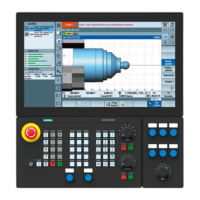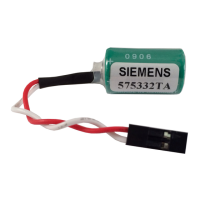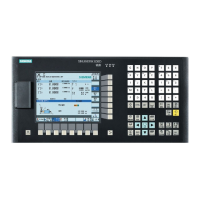Key functions for 5-axis machining
3.5
© Siemens AG All rights reserved. SINUMERIK, Manual, 5-axis machining
50
3.5.4 Tool orientation
For the purpose of 5-axis simultaneous machining, the orientation of the tool needs to be defined
in addition to the position setpoint of the machining point. There are a variety of methods that are
commonly used to define the tool orientation. Generally speaking, 5-axis programs are created
with the CAM system and the post processor is responsible for defining the type of orientation
process used.
Direction vector (A3= B3= C3=)
Explanation of the commands
Direction vector
programming
The use of the direction vector is recommended. The accuracy level selected should be as
high as possible. As far as 5-axis programs are concerned, practical experience has
shown that good results can be achieved by using 5 decimal places for the linear axes
and 6 for the direction vector.
If you program C3=1, the tool will be aligned along the Z axis. This might prove useful, for
example, if you need to remove a tool in the Z direction or retract it from a hole.
G1 X Y Z A3= B3= C3= Programming of direction vector (recommended)
The components of the direction vector are
programmed with A3, B3, and C3. The vector
points towards the tool holder; the length of
the vector is of no significance. Non-pro-
grammed vector components are set to zero.
N020 TRAORI
N035 G54
N040 G1 X0 Y0 Z0 A3=1 B3=1 C3=1 F10000
...
The example shows the tool in the position
(0,0,0) as a diagonal of a cube (35.26° in rela-
tion to X-Y plane).
C3
B3
A3
NOTE
NOTE

